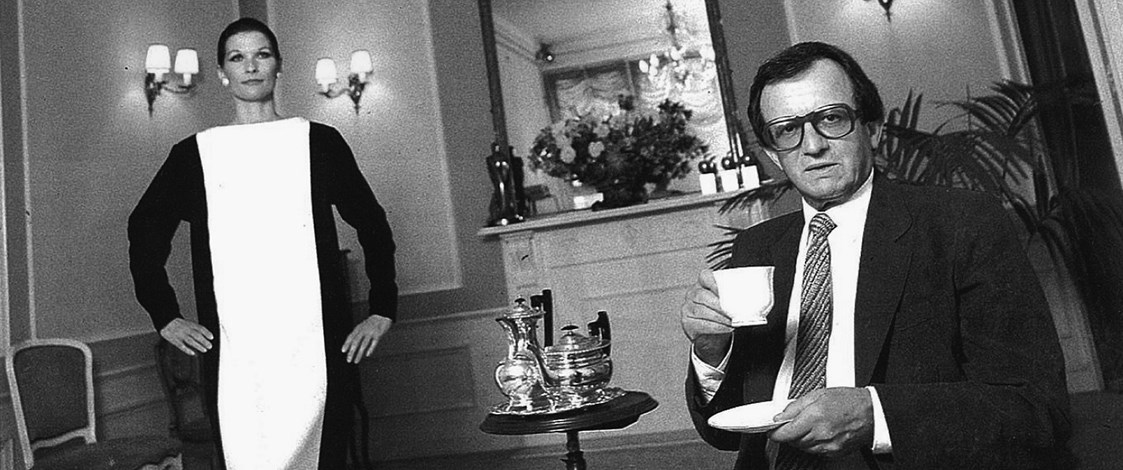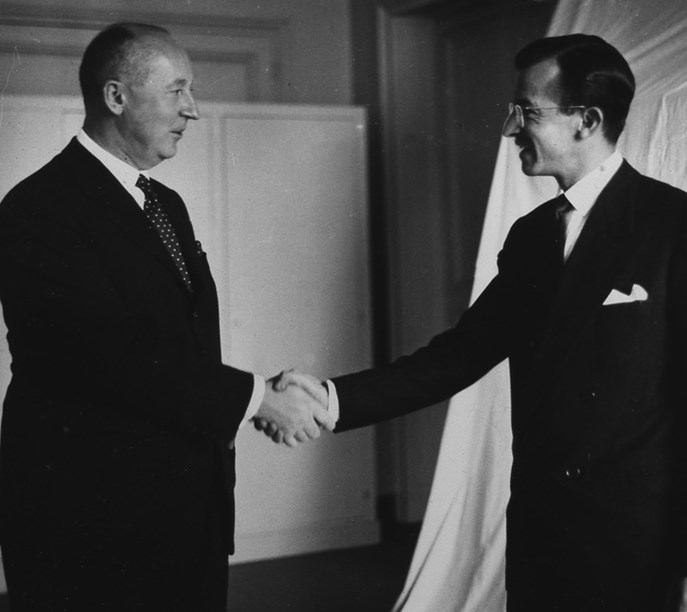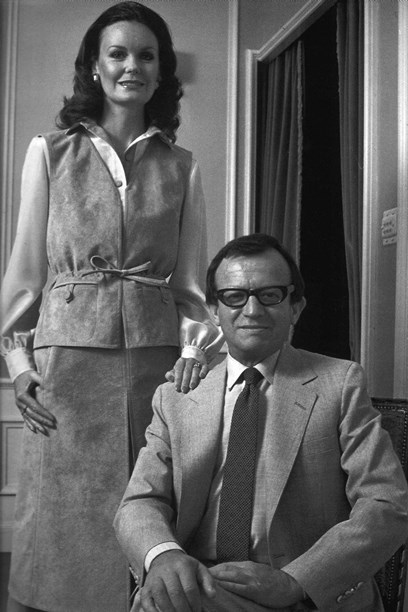Stories
Gus Fisher & El Jay
Gus Fisher: 1920-2010, El Jay: Late 1930s–1988

While many people today will recognise the name Gus Fisher in relation to arts patronage lending his name to the Gus Fisher Gallery in Auckland, Gus first rose to national prominence in the world of high fashion. He was the creative force behind one of New Zealand most aspirational mid century fashion labels, El Jay.
Gurshon Fisher, was born in Wellington on 11 December 1920, the youngest of six children to parents Michael Fisher and Fanny Dabscheck. Michael was a Jewish émigré from Riga in Latvia and Fanny was the daughter of a Jewish Russian émigré to Australia. In 1925 they moved to Auckland with their children Woolf, Lou, Midge, Floss, Pearl and four-year-old Gus. Family history tells of an early interest in drawing and design, a talent that would find fruitful expression in his later career.
In 1938, at the age of 17, Gus Fisher left school and went to work for his elder brother, Lou Fisher in his newly established clothing manufacturing business El Jay, a name derived from the initials of Lou’s forenames, Louis Jacob. Following the Second World War, Gus took over the label with the ambition of transforming it into a high end, design-led label.
Shirley Horrocks interviewed Gus Fisher about the early days of El Jay.
Gus wanted to broaden the New Zealand fashion perspective by looking beyond the English-style conventions that pervaded the local fashion scene. He turned his gaze lovingly to the couture of Paris, interpreting it and making his own version of European style available to all women here.
Gus travelled to Paris every year to see first hand the new designs and fabrics but most importantly to experience the mood and feel of the fashion trends. This commitment to experiencing the real thing led to not just a keen awareness of the latest trends but also to the establishment of relationships with the Paris couturiers.
In 1953 Gus was invited to take up the exclusive licence to produce Christian Dior originals in New Zealand. The offer was accepted and the agreement was signed with Christian Dior himself in Paris in 1954.

Christian Dior and Gus Fisher signed an exclusive agreement in Paris in 1954.
Gus’ dedication to reproducing the authentic style of Dior even inspired him to create a scaled down replica of Christian Dior’s Paris salon in the El Jay premises in Kingston Street. The quality of the production from the house of El Jay is legendary and Gus never lost the Dior licence becoming the longest licence holder in the world, an honour marked by a special award ceremony at the Dior Salon in Paris in 1986.
Gus Fisher was interviewed by Shirley Horrocks about the El Jay exclusive licence to produce Christian Dior originals.
Gus created smart, high quality clothing for the discerning woman of New Zealand, for fifty years until he closed his business in 1988. The Christian Dior and El Jay labels were sold in the top department stores and fashion boutiques around the country including his own flagship stores – the French Shop in Remuera and the El Jay boutique in the 246 building, the 1960s cutting edge retail development on Queen Street in Auckland.
The labour force for the factory at El Jay was diverse and extensive, including up to 30 machinists. In the 1940s and 1950s there were two pathways into work when you left school: either you enrolled in one of a number of vocational education institutions like the Druleigh College of Dressmaking or alternatively you could join a company as an apprentice. The staff at El Jay were recruited from both of these avenues.
El Jay was a label which set a benchmark, not just for style, but for its use of fabrics. While Gus Fisher used beautiful woollen facecloth, Moygashel linen, Duchess silk satin and plush cotton velvet, he was also an early adopter of the new man-made textiles that were being developed at pace in the post war era, especially in America and Japan. Consequently there are El Jay garments made in fabrics such as Courtelle and Orlon, which were machine washable and easy-care, but the man-made fabric that became synonymous with El Jay in the mid 1970s and early 1980s was Ultrasuede. This marvel of modern chemistry had it all, suppleness, softness, it didn’t crease or pill and it was washable. It was developed in Japan in 1970 and became a favourite of hip American designer Halston. He had first seen this new material as a shirt jacket worn by Issey Miyake and admired its combination of luxury and utilitarianism. Halston developed a very light construction that had the seams overlap and topstitched together with two parallel rows of stitching so that they remained thin and flexible and linings were never used. Halston showed his first shirtdress in Ultrasuede in 1972 and it became a runaway success becoming a favourite of the fashion-conscious Kennedy women who were style leaders.It was also the perfect travelling companion surviving the rigours of packing with good grace.
Gus Fisher, realising Ultrasuede's fashion and commercial potential, secured the exclusive licence to manufacture fashion garments from this revolutionary new material in New Zealand. In 1974 he began marketing his first range. The resulting popularity soon warranted a retail space all of its own, the El Jay Ultrasuede shop on the ground floor of 246 Queen Street.

Gus Fisher and model Dianne Martin who wears an Ultrasuede suit, 1980.
Gus Fisher died on Tuesday 20 July 2010, just three days after the close of the Auckland exhibition season, which makes the timing and the tenor of the exhibition all the more poignant. His contribution to the development of New Zealand fashion is now a matter of record which will be available for the future.
Text by Doris de Pont. Banner image by Phil Fogle © Metro magazine.
Last published July 2013.